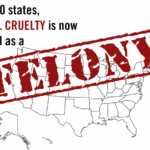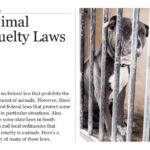The complex intricacies of animal cruelty investigations often remain shrouded in a veil of mystery. Many individuals may wonder who takes the helm in addressing these poignant issues that plague the sanctity of animal welfare. Delving into the world of animal law enforcement reveals a multifaceted approach, characterized by an interplay of local, state, and federal entities dedicated to protecting animals from mistreatment and neglect.
At the forefront of these investigations are specialized officers, often referred to as animal control officers or humane law enforcement officers. These individuals are not merely enforcers of the law; they embody a profound commitment to advocating for animals that cannot speak for themselves. In many jurisdictions, animal control officers are part of public safety departments, tasked with enforcing ordinances pertaining to animal welfare. However, their roles extend far beyond mere code enforcement.
Animal control officers are trained to handle a variety of situations, equipped with a nuanced understanding of animal behavior. They approach cases with both compassion and determination, seeking to uncover the truth behind reports of animal cruelty. Their training may encompass diverse areas such as behavior analysis, first aid for injured animals, and the legal ramifications of animal cruelty laws. This holistic approach enables them to navigate the often emotionally charged scenarios that arise during investigations.
In many situations, reports of animal cruelty may stem from concerned citizens who witness suspicious behavior or find animals in distress. Upon receiving such reports, animal control officers conduct thorough investigations. This entails gathering evidence, interviewing witnesses, and, when necessary, performing welfare checks on the animals involved. The delicate balance of empathy and inquiry is crucial, as the ultimate goal is to alleviate suffering while adhering to legal standards.
Moreover, the collaborative nature of these investigations highlights the intersectionality of law enforcement and animal welfare advocacy. Animal control officers often work closely with other entities, including local law enforcement, veterinarians, and animal welfare organizations. For instance, in cases that escalate to potential criminal charges, local police departments may become involved. This partnership ensures a more robust response to particularly egregious instances of cruelty.
It is also essential to illuminate the role of state animal protection agencies. Many states have established dedicated animal control divisions that provide resources and training to local officers. These agencies develop and enforce state-specific animal welfare laws, advocating for increased penalties for violators and working towards legislative reforms. Their involvement not only bolsters investigative efforts but also promotes a more expansive public understanding of animal rights.
On a yet larger scale, federal involvement is also significant, particularly in cases that implicate interstate trafficking of animals or organized cruelty operations, such as puppy mills. The United States Department of Agriculture (USDA) oversees compliance with the Animal Welfare Act, which aims to prevent neglect, abuse, and the exploitation of animals in various contexts, including research and entertainment. The federal perspective adds another layer of oversight that is crucial in addressing cruelty on a broader spectrum.
However, the road to changing perceptions surrounding animal cruelty investigations has been fraught with challenges. The prevailing notion of animals as property, entrenched in legal systems, often hampers the advancement of animal rights. This sentiment can lead to a collective complacency surrounding animal welfare issues. Yet there exists an undeniable curiosity among the public about the workings of animal law enforcement. This fascination often stems from a deep-rooted connection to animals and a desire to see justice served for those who cannot advocate for themselves.
Despite facing numerous hurdles, public interest in animal cruelty investigations can catalyze change. Grassroots movements, fueled by passionate advocates and concerned citizens, are often at the forefront of enacting legislative shifts. Victories, such as the passing of stricter penalties for animal abuse, serve as a testament to the persistent efforts of both law enforcement and activists alike. These developments garner attention and encourage individuals to engage more actively in animal welfare matters.
A compelling aspect of animal cruelty investigations is the emotional toll these cases can take on those involved. For officers, witnessing the effects of abuse often provokes feelings of frustration and sorrow. Each case may involve trauma—be it an animal suffering from severe neglect or horrifying acts of cruelty. To cope, animal control officers, along with their colleagues in the field, often rely on support networks, including peer groups and professional counseling. This emotional resilience is paramount, enabling them to continue their vital work in advocating for and protecting vulnerable animals.
In conclusion, the investigation of animal cruelty reports is a multifaceted endeavor characterized by the interplay between various levels of law enforcement and community engagement. From local animal control officers to state and federal agencies, a concerted effort is made to address incidents of abuse and neglect. The pursuit of justice for animals is not merely a professional duty; it is a calling driven by a fundamental belief in the rights and welfare of all living beings. As public awareness grows and advocacy continues to evolve, it is crucial to remain vigilant in supporting those who stand at the forefront of this often-overlooked field—ensuring that the voices of the voiceless are heard, heeded, and protected.






